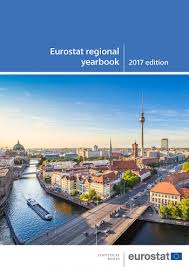 Eurostat has recently published its regional yearbook providing statistics and data collected in the 28 Members States of the EU. This yearbook focuses on different subjects such as health, education and training, labour market, research and innovation, tourism and transport among others. This 2017 edition also presents a focus on European cities and a focus on rural areas.
Eurostat has recently published its regional yearbook providing statistics and data collected in the 28 Members States of the EU. This yearbook focuses on different subjects such as health, education and training, labour market, research and innovation, tourism and transport among others. This 2017 edition also presents a focus on European cities and a focus on rural areas.
The chapter on rural areas assesses differences between people living in rural areas and those living in urban areas in the 28 Member States of the EU. It covers the following subjects: poverty and social exclusion, housing, health, education, the labour market and the digital divide.
The results in rural areas vary from one Member State to another, nevertheless it is possible to draw trends:
-
People living in rural areas in the EU are more exposed to poverty and social exclusion
The report shows that the risk of poverty or social exclusion is highest in rural areas of several Eastern and Southern EU Member States. This was particularly the case in Bulgaria, Romania and Malta, where at least half of the rural population was at risk of poverty or social exclusion in 2015. Eurostat notes that most of the Member States that joined the EU in 2004 or more recently recorded a higher risk of poverty or social exclusion among their rural populations than in cities or in towns or suburbs.
The report also states that almost one in five persons of the EU’s rural population was living at risk of poverty.
-
Health care access is more difficult in rural areas of new EU Member States
The report details that, in 2015, some 4.2 % of the EU-28 population living in rural areas reported unmet needs for health care due to expense, distance to travel (medical services tend to be concentrated in towns and cities), or the length of waiting lists. This share was higher than the corresponding figures recorded for towns and suburbs (3.8 %) or for cities (3.5 %). However, this fact is mainly reported in Member States that joined the EU in 2004 or more recently, while in most of the western EU countries, there was almost no difference between rural and urban areas.
-
People living in rural areas are more inclined to leave education early
The report notes that people living in rural areas are generally more inclined to leave education or training early. There are, however, considerable differences between the EU Member States. For instance, in some countries (such as France, Belgium, Germany, Malta and Austria) people living in cities registered the highest early leaver’s rate. Nevertheless, in some other countries, for example, Slovakia, Spain, Greece, Hungary, Estonia, Romania and Bulgaria, the gap between rates in rural areas and in cities shows that 25.8% of people living in rural areas leave education early against 7.3% of people living in cities and towns.
In addition, the report shows that the share of young people (aged 18 to 24) living in rural areas of the EU who were neither in employment nor in further education or training was 3.7 percentage points higher than in cities
-
Still an important Digital divide between urban and rural areas
Less than two thirds (62 %) of the EU-28 population living in rural areas accessed the Internet on a daily basis in 2016; this share rose to 72 % for people living in towns and suburbs and peaked at three quarters (75 %) of the population among city-dwellers. As a result, for all but three of the EU Member States (Belgium, Ireland and Luxembourg), the lowest proportion of people making use of the internet on a daily basis was recorded in rural areas. Moreover, in some countries, like Lithuania, Portugal, Bulgaria Romania and Poland, a relatively low proportion of the rural population made use of the internet on a daily basis in 2016. The report highlights the fact that some of these differences in the daily use of the internet may be attributed to a lack of infrastructure in rural areas, which restricts access to and the availability of digital technologies.
All the statistics on rural areas are available in the Eurostat regional yearbook
2 October 2017









